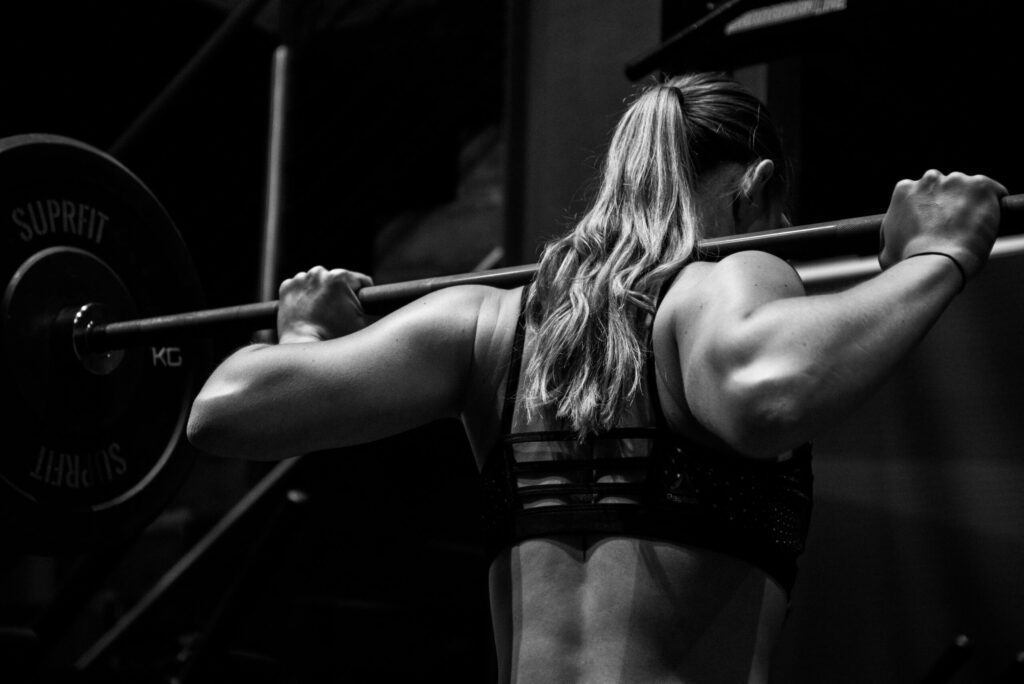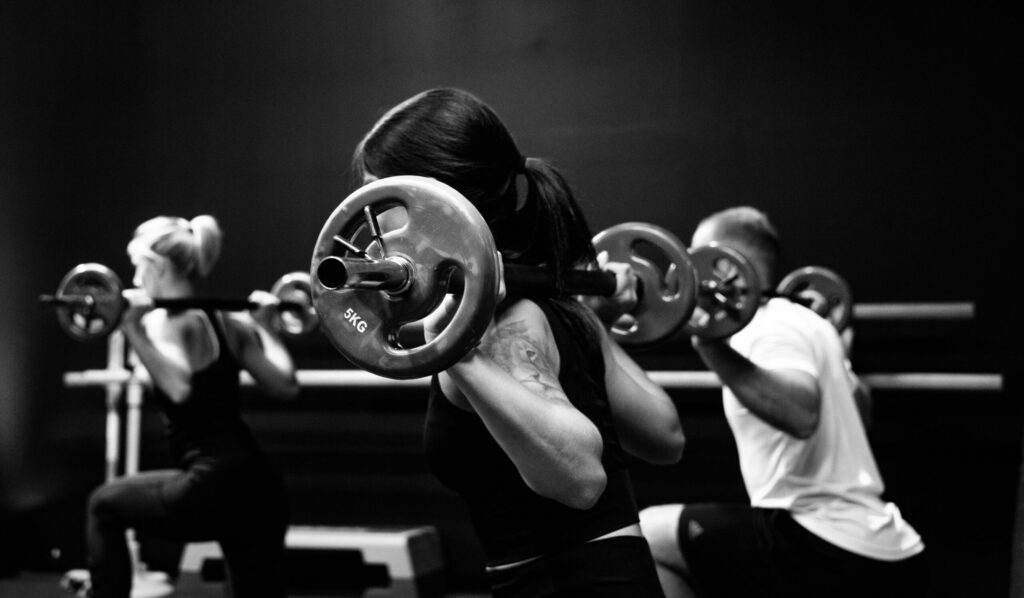The organisation of training variables through specific phases of a training plan. It essentially provides us a framework to working towards a desired outcome.
Think of periodisation like a book. Like a book, a well periodised program should have flow. If the chapters of a book are out of order then the story won’t make sense. The content might be there but if the chapter are jumbled you’ll get to the end and have no idea what you just read. Your program should move seamlessly from 1 cycle to the next and finish with an outcome that “makes sense”
The Stages Of Periodisation
Periodisation can be broken into 3 stages:
-
Microcycle
-
Weekly planning
-
Mesocycle
-
Monthly planning
-
Macrocycle
-
Yearly planning
Below is an example of how all these cycles would work in with each other. Every cycle has its own specific goal. Let’s look at a physique athlete as an example
Macro cycle
Meso Cycles
Micro Cycle
To make understanding of periodisation easier we will be referring to the below example of a 3 stage periodisation model. Whilst it might look like a jumble of words at the minute, we will relate each type of periodisation back to this example.What should be noted is that ALL types of periodisation can be related back to this example which brings to light a very interesting point. No program is exclusively one type of periodisation. Each type of periodisation is a PATTERN than you will be able to apply/identify to all programs.
Meso 1 (Accumulation 1)
Meso 2 (Accumulation 2)
Meso 3 (Intensification)
Why Is Periodisation Important?
Fatigue Management
This is the Fitness/Fatigue model. Increases in fitness require overload but with overload comes fatigue. In the model whilst both fitness and fatigue will increase with training, fatigue has a much steeper curve. We can’t express this improved fitness in a fatigued state. Lucky for us we can reduce fatigue quite rapidly whilst maintaining fitness. Using power lifters for example. They will accumulate fitness and fatigue in training and then in the leading weeks before a meet, will taper training to reduce fatigue and allow them to perform on the day.
Phasic Training
The nature of periodisation allows for the meaningful rotation of general and specific preparation. Let’s use the powerlifter for example. Obviously for success in powerlifting there needs to be training periods focussed around the big 3 at heavy loads. Remember, expressing strength is a skill. BUT training at heavy loads with complex movements is very systemically fatiguing and training like this year round will lead to increase injury risk, sub optimal performance and non-functional overreaching. This is why going through periods of a more general preparation are necessary. Spending a period of time focussing on volume, addressing weak points in lifts and taking some (not all) emphasis off the big 3 will allow for increased success in a specific phase and then peak into competition.
Adaptive Capacity
Adaptive capacity refers to the slowing of progress due to the lifter becoming closer to their genetic ceiling. The rate of progression will get smaller as our advancement level goes up. (We get less and less return from our training – diminishing returns).
In summary what periodisation aims to allow for is further progression. If we look at a very typical 3 meso cycle hypertrophy program we may see something like our article reference;
Meso 1 (Accumulation 1)
Meso 2 (Accumulation 2)
Meso 3 (Intensification)
What you can see is that after 2 blocks of accumulation with a focus on volume we can move into an intensification block where the focus is load/intensity. Neither blocks are mutually exclusive of each other (hypertrophy blocks can have lower rep ranges and strength blocks can have mid to high rep ranges), however they are more specific to the goal of the mesocycle.
We shift the emphasis from a more hypertrophy focussed style of training to a strength focus meaning there is a shift in the stimulus which requires a different adaptive response from the body. The really nice point about this type of structure is that whilst volume is lower in the intensification block to reduce some fatigue, we can still maintain gains made in the accumulation block as we are not likely to drop below our MEV.
TYPES OF PERIODISATION
Linear Periodisation
This type of periodisation sees volume decrease whilst intensity increases over time. A considerable amount of time is spent in each training phase.
High volume/ low intensity work moving into higher intensity/ lower volume work then finally into peaking, (volume very low).
What you will generally find in resistance training is an inverse effect between volume and intensity i.e as volume decreases over a meso cycle, intensity will in general increase and vice versa. However, this is specific to the individual. See below example for a decrease in volume and increase in intensity (typical linear progression)
Week 1: Back Squat, 4 x 10 @ 100kg
Week 2: Back Squat, 4 x 9 @ 102.5kg
Week 3: Back Squat, 4 x 8 @ 105kg
Week 4: Back Squat, 4 x 7 @ 110kg
In different context see the example below, a beginner will highly likely be able to add 2.5kg to the bar every week without dropping rep x set volume.
Week 1: Back Squat, 4 x 10 @ 50kg
Week 2: Back Squat, 4 x 10 @ 52.5kg
Week 3: Back Squat, 4 x 10 @ 55kg
Week 4: Back Squat, 4 x 10 @ 57.5kg
Week 5: Back Squat, 4 x 10 @ 60kg
In the typical linear model (let’s take a 16-week intermediate powerlifting prep), you’ll see high volume/ low intensity work moving into higher intensity/ lower volume work over the 3 meso cycles.
-
Meso 1 (Volume/ accumulation, up to 8 weeks)
-
12-20 working sets per muscle group
-
6-12 rep range
-
Meso 2 (Intensification/ strength, up to 6 weeks)
-
10-18 working sets per muscle group
-
3-8 rep range
-
Meso 3 (Peak/ max strength, up to 2 weeks)
-
1-4 working sets per muscle group
-
1-6 rep ranges
Now let’s draw the attention to our article reference. You can see a similar framework here. The accumulation phases (high vol/ low int), moving into an intensification phase (low vol/high int). What is the take home point? Types of periodisation are not mutually exclusive. They all intertwine in some ways to form a systematic pattern that is directed towards a goal.
Meso 1 (Accumulation 1)
Meso 2 (Accumulation 2)
Meso 3 (Intensification)
Consideration:
As we begin to delve into the types of periodisation, it’s important to remember that each type is not restricted to any given time length. In the case of linear periodisation, it’s impossible for you to constantly increase on a training variable every single week/session. For example, you can’t add weight to the bar every time you come into to squat (unless you are a novice). There will be times where load is reduced for fatigue management, increases in volume to elicit hypertrophy etc. What this will mean is that there will be peaks and troughs in your squat loads but if you take those peaks and troughs and draw a straight line through it, you should see a linear progression over time.
BLOCK PERIODISATION
Block periodisation refers to breaking programs into meso cycles that are distinct in their goals/features. Again using our ARTICLE EXAMPLE:
Meso 1 (Accumulation 1)
Meso 2 (Accumulation 2)
Meso 3 (Intensification)
As you can see over the 3 phases, there are distinct goals which will therefore dictate how the training variables are manipulated i.e both accumulation blocks focus on hypertrophy and therefore volume increases are prioritised. In meso 3, strength is the focus and therefore volume drops and increases in load are the focus.
Like with all form of periodisation, we can apply the pattern in many ways. Block periodisation for example can occur over a 2-year span with a physique competitor, see below.
Gaining Phase – 12 months
-
Increase muscle size
-
Fat gain within acceptable range
-
Put yourself in a position of strength
-
High caloric intake
-
Good relationship with food
-
Develop favourable training and nutrition habits
Cutting Phase – 9 Months
-
Drop body fat whilst maintain muscle mass
-
Allow time for some experimentation with responses to peaking strategies.
-
This period should aim to minimise outside stressors as much as possible
Competition Phase – 1 Month
-
Peak! Most athletes will compete in multiple comps over the span of 3-6 weeks.
-
This is a balancing act and experimentation stage i.e using the first 2 comps to experiment and build into the main goal of the 3rd comp.
Post Comp/Recovery Phase – 2 Months.
-
Often thought of as the hardest part.
-
Strategies must be implemented to
-
Ensure mental and physical health are in a good state post comp
-
There is enough recovery time
-
That they are well set up for future competition and health.
DUP (Daily Undulating Principle)
DUP is typically defined by changing training variables in each session of the week. More specifically the variables of volume, intensity and effort (RPE). In my opinion, the smart use of DUP can go a long way in designing and implementing a very effective program. Let’s look at some examples;
Example 1
DUP is most well-known for allowing an athlete to train all 3 ‘physical’ qualities for a set of lifts. For example, you may see a program that requires you to
Day 1 – Squat Hypertrophy, 4 x 10 @ 80% 1RM
Day 2 – Squat Power, 4 x 2 @ 30% of 1RM
Day 3 – Squat Strength, 5 x 3 @ 85% 1RM
Example 2
DUP is very commonly used on powerlifting using the squat, bench and deadlift. Let’s say this is an intermediate powerlifter having some lock out issues. We know that strength is skill specific so it makes sense to increase the frequency of our lift. But, systemically the deadlift is very taxing so there is no way we could do it at a high intensity 3 times per week. For this individual, their week may look like
Day 1 – Block Pulls, 3 x 4 @ RPE 8
Day 2 – Deadlift (technique session), 5 x 1 @ 70% 1RM
Day 3 – Deadlift (heavy session), 5 x 3 @ 85% 1RM
Example 3
A common way to structure a upper/lower training split is to complete strength at the start of the week and then hypertrophy focussed work at the end of the week.
Day 1 – Lower Strength
Day 2 – Upper Strength
Day 3 – REST
Day 4 – Lower Hypertrophy
Day 5 – Upper Hypertrophy
How does our ARTICLE EXAMPLE display DUP? To see it within this program you’d have to see an individual week of training and you’d see something like the examples we just provided. Another way you’d see Undulation is if we put two of the ARTICLE EXAMPLES back to back. This is undulation over a longer period! Volume starts high, drops down and then rises again for the new block, vice versa for intensity.
Meso 1 (Accumulation 1)
Meso 2 (Accumulation 2)
Meso 3 (Intensification)
Summary
Periodisation is a framework that we use to give us direction in training. We then must fill in the specifics to ensure that our goal is met. It’s like using google maps. Google maps is the framework, it can take us anywhere we want to go! If we type in the wrong co-ordinates though then we won’t end up at the desired destination.
To continually progress as we move through levels of advancement, periodisation becomes increasingly important. Like the saying many roads lead to Rome. Depending on your training and advancement will dictate the level of detail that needs to be applied in your program (which road you take). As we step up in advancement, our progress becomes less and less, so more detailed, more in depth specific and individualised programming of ‘VIF’ and specific periods of time dedicated to a certain physical trait is required.
Think long term with periodisation and focus on progressing over time (all periodisation should be linear over time). Make sure the model you choose is specific enough to your goal.












